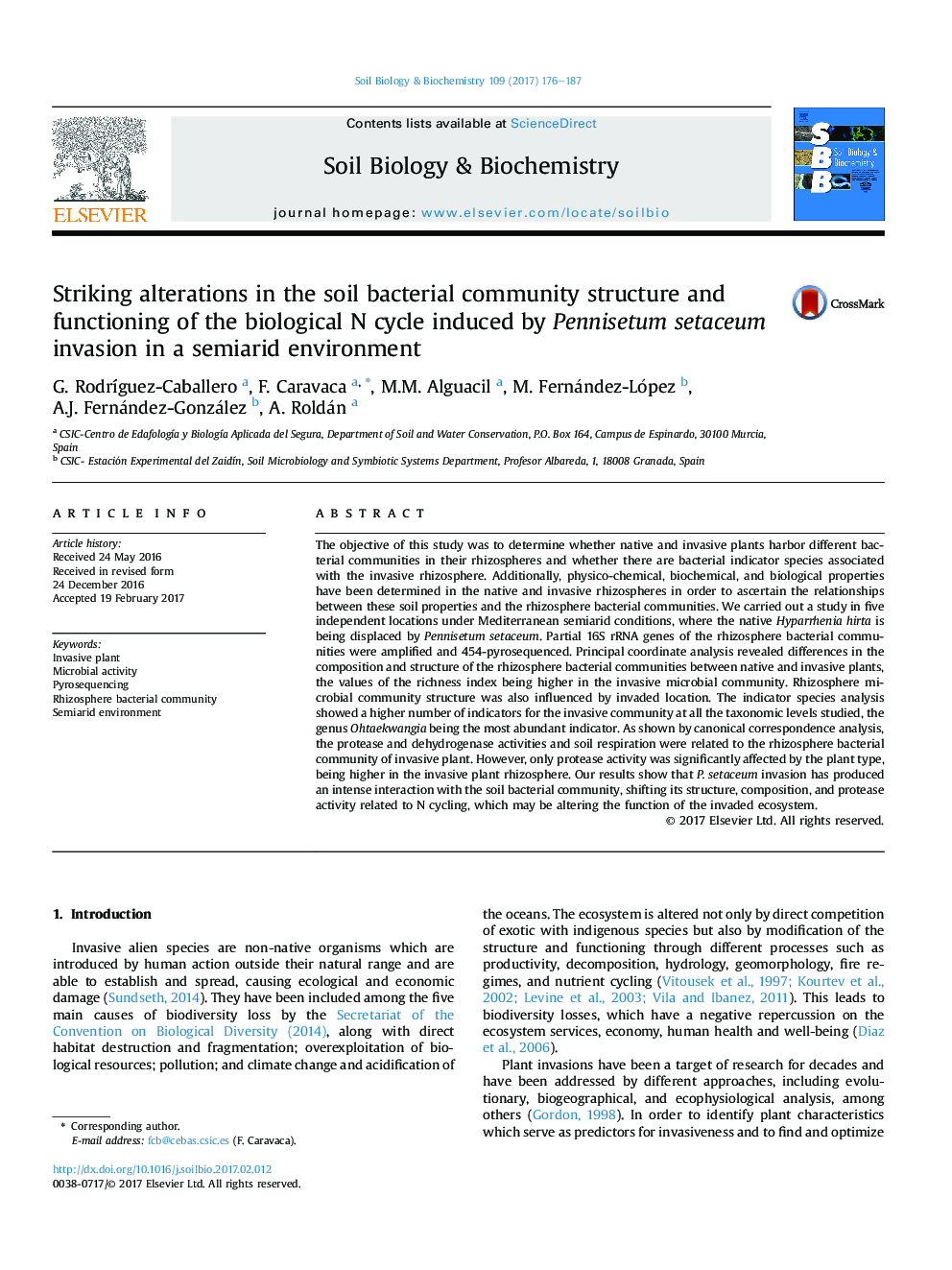| کد مقاله | کد نشریه | سال انتشار | مقاله انگلیسی | نسخه تمام متن |
|---|---|---|---|---|
| 5516486 | 1542575 | 2017 | 12 صفحه PDF | دانلود رایگان |

- P. setaceum is an invader in Mediterranean semiarid ecosystems of Southeast Spain.
- Invasive plant had higher bacterial community richness than H. hirta.
- The genus Ohtaekwangia was the most abundant indicator of P. setaceum rhizosphere.
- Protease activity and pH were significantly higher in invasive plant rhizosphere.
- Protease activity was related to bacterial community structure of invasive plant.
The objective of this study was to determine whether native and invasive plants harbor different bacterial communities in their rhizospheres and whether there are bacterial indicator species associated with the invasive rhizosphere. Additionally, physico-chemical, biochemical, and biological properties have been determined in the native and invasive rhizospheres in order to ascertain the relationships between these soil properties and the rhizosphere bacterial communities. We carried out a study in five independent locations under Mediterranean semiarid conditions, where the native Hyparrhenia hirta is being displaced by Pennisetum setaceum. Partial 16S rRNA genes of the rhizosphere bacterial communities were amplified and 454-pyrosequenced. Principal coordinate analysis revealed differences in the composition and structure of the rhizosphere bacterial communities between native and invasive plants, the values of the richness index being higher in the invasive microbial community. Rhizosphere microbial community structure was also influenced by invaded location. The indicator species analysis showed a higher number of indicators for the invasive community at all the taxonomic levels studied, the genus Ohtaekwangia being the most abundant indicator. As shown by canonical correspondence analysis, the protease and dehydrogenase activities and soil respiration were related to the rhizosphere bacterial community of invasive plant. However, only protease activity was significantly affected by the plant type, being higher in the invasive plant rhizosphere. Our results show that P. setaceum invasion has produced an intense interaction with the soil bacterial community, shifting its structure, composition, and protease activity related to N cycling, which may be altering the function of the invaded ecosystem.
Journal: Soil Biology and Biochemistry - Volume 109, June 2017, Pages 176-187